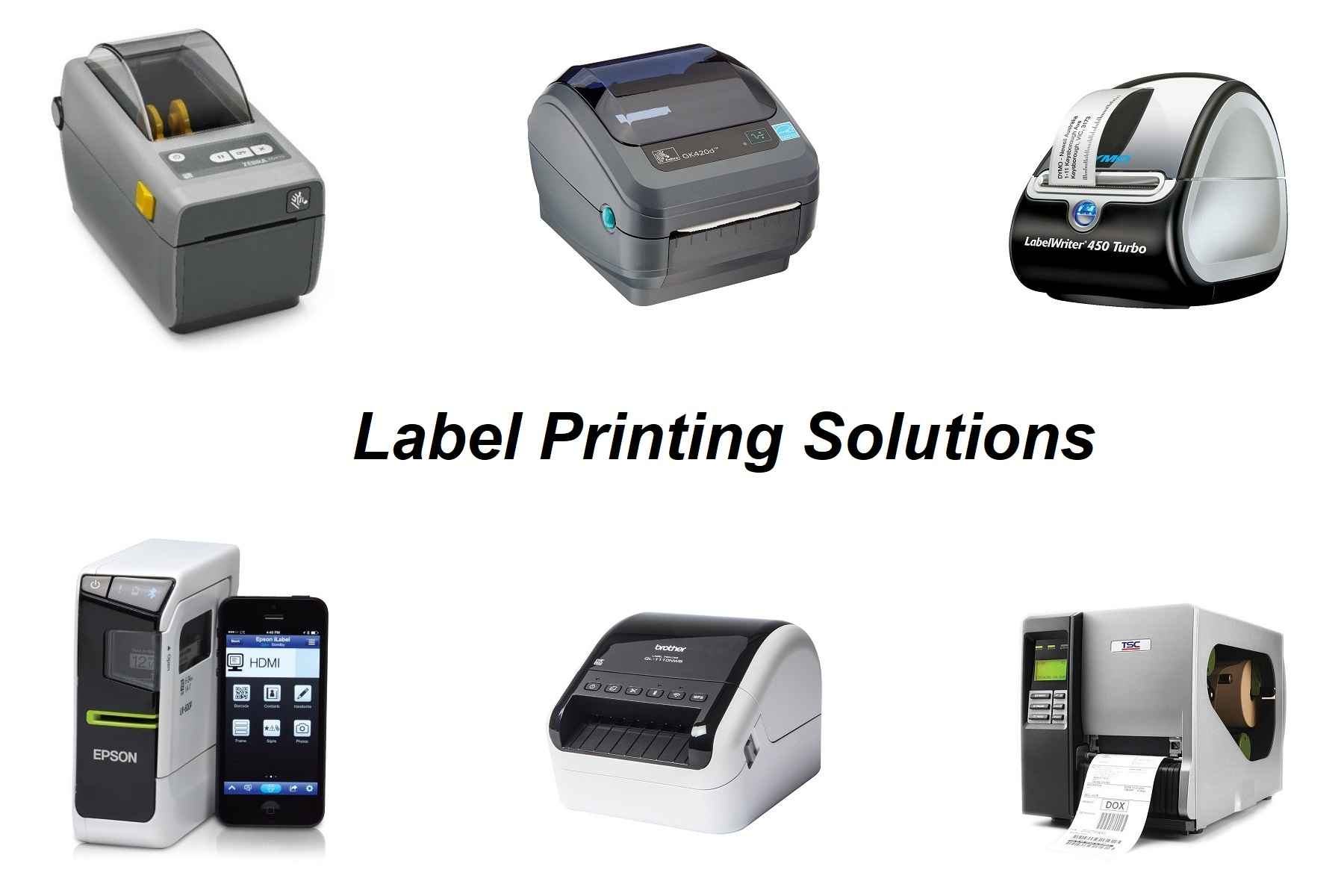Cash Register Warehouse's Label Printing Solutions complete your POS System. Not only are label printers used at the Point of Sale, they can be used in many other areas including Medical, Logistics, Packaging and many other environments. Do you know which Label Printer you require for your Business?

At Cash Register Warehouse our aim is to provide our customers with complete POS Systems that cater for all their needs and this includes Label Printing Solutions.
We stock a wide range of Direct Thermal, Thermal Transfer, Compact and Industrial Label Printers from brands including Bixolon, Citizen, Brother, Zebra and Dymo just to name a few.
Not only do we stock a Label Printer to suit any requirements you might have but we also stock the consumables such as Labels and Ribbons.
Lets talk about the difference between Direct Thermal and Thermal Transfer printing.
Direct Thermal (DT)
Direct Thermal printing is where the printhead comes in direct contact with the label media. There's a coating on the label media that turns black as heat is applied to it. Because of this, no ribbon is required.
Thermal Transfer (TT)
Thermal Transfer printing is when the heat from the printhead is applied to the ribbon. The material on the ribbon is then transferred to the label media.
If your not sure what printer or label type is suitable for your needs, this might help you decide.
Direct Transfer Printers and Labels are best suited to companies with perishable goods (less than 12 months shelf life) because the label doesn't need to last a long time.
Thermal Transfer Printers and Labels are better suited to companies whose products need to endure friction, changes in temperature or dampness and last more than 6 months, i.e. “long-life” manufactured goods.
When selecting the right Printer for your business, take a look at these 5 Key Considerations.
Thermal Print Head Cost & Life
Direct Thermal printing requires the print head elements to be in direct contact with the label material as it is pulled across the print head. Thermal Transfer printing has a thermal ribbon acting which acts as a “buffer” between the print head elements and the label material. Many thermal ribbons are designed with a back-coating that serves to increase print head life by reducing static and friction. This benefit is not possible with direct thermal printing due to the lack of ribbon. Instead, the label material is in direct and constant contact with the print head, resulting in increased wear and tear when compared to thermal transfer printing.
In direct thermal applications, dust and debris that may become present on labels are in direct contact with the print head. As these foreign materials are pulled across the print head, they may burn onto the elements or physically damage the elements resulting in poor print quality and/or premature print head failure. The same foreign material can exist in thermal transfer printing applications, but the debris would be between the label and the ribbon (i.e. not in contact with the print head elements) reducing the potential for damage.
Printer Configuration and Cost
Printer configuration is one area where some cost savings will be available. Thermal transfer printers normally have the capability of printing either thermal transfer or direct thermal. If your business is only going to print direct thermal, there are printers available that only have direct thermal capability. These printers are generally less costly to purchase because they do not contain any of the hardware necessary for driving and controlling ribbons. Eliminating the ribbon and ribbon hardware components also results in a less complex printer with fewer parts to wear and/or break, resulting in lower service costs and less downtime over the life of the printer. Additionally, operators don’t have to be concerned with ribbon settings or adjustments, leading to improved uptime and increased efficiency. The process of changing thermal ribbon requires downtime. Even the best operator still needs several minutes to replace used ribbon with a new roll and downtime costs money. A standard size, 450 meter roll of ribbon will provide about 2,800 six-inch labels. If running 20 products per minute, for example, calculate into the evaluation several minutes of downtime about every 2.5 hours. Doesn’t seem like much? If calculated at 20 hours per day average production, the result over one year would be 144 hours of downtime for ribbon changes.
Media Selection & Cost
Media choice directly impacts the cost of labels, it will also impact the life of the print head, upper-end print speed capabilities and print quality. These are important considerations as they may impact the ongoing cost of operations. The Print head and label are in direct contact with one another during the direct thermal printing process. Therefore, the media acts as a direct abrasive as it is pulled across the print head. If the labels are too abrasive, they will prematurely wear out the print head resulting in increased replacement costs. Many believe the use of a “coated” direct thermal label is a better solution than an “un-coated” label. It may be, but don’t depend simply on the description that a direct thermal label is “coated” to mean it’s a good label. Inferior labels can be coated the same as any other label. Therefore, a “coated” label doesn’t necessarily mean it will outperform a non-coated label. There’s no getting away from the label abrading the print head, but choice of media can make a huge difference in the frequency of print head replacement.
Label Life Requirements
Requirements surrounding label life brings us back to the heart of the difference between direct thermal labels and thermal transfer labels. Direct thermal printed labels simply do not offer the same lifetime as a thermal transfer printed label. A business must know its label life requirements before considering direct thermal labels.
If the product being labeled could be in the supply chain for an extended period of time or in extreme conditions such as direct sunlight or chemical contact, then the technology used should likely be thermal transfer. For example, building materials are often transported unprotected and stored outdoors. Not a good choice for direct thermal technology. Another consideration would be if the information on the label is extremely critical and must be readable for an indeterminate amount of time. Examples might include pharmaceutical products or hazardous materials. These items should likely utilize thermal transfer printed labels to ensure a long lifetime.
If the product is expected to have a short life in the supply chain and is not exposed to harsh environmental conditions, then direct thermal may very well be a good choice. Examples of this type of product could include fresh meat, dairy products and shipped parcels. Regulatory requirements for privacy of information are another area impacting the use of direct thermal media. In healthcare, patient privacy can be at risk if personal information is available on used thermal transfer ribbon. This has led to an increased use of direct thermal media for prescription labels and patient wristbands, for example.
Environmental Requirements
In today’s world waste reduction, lower carbon footprints and sustainability are increasingly part of corporate mission statements and, in some cases, used to increase competitive advantage. Thermal ribbon uses a poly-based carrier made, in part, from crude oil products. Eliminating the use of thermal transfer ribbon can therefore positively impact a company’s goal for a reduced carbon footprint. Direct thermal technology eliminates the use of thermal ribbons and therefore eliminates the waste created through its use, but it is not suitable for all applications. As advances in direct thermal materials continue to expand the potential use applications, the above considerations will take on increased importance in organisations where the choice of technology exists.
Where to buy Label Printers within Australia?
Cash Register Warehouse can provide your business with a full Label Printing Solution.
To view our range of products you can visit https://www.cashregisterwarehouse.com.au/label-printers
You are also welcome to give us a call or email us with any enquiries you may have.
< Back to blog

